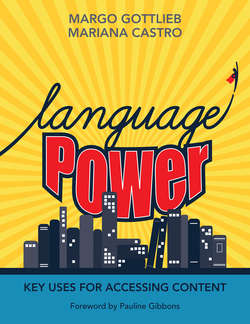Читать книгу Language Power - Margo Gottlieb - Страница 24
На сайте Литреса книга снята с продажи.
Global Interconnectedness
ОглавлениеReexamining the quadrant at the beginning of this prelude, we approach the last perspective for advancing our rationale for academic language use. For it is through global interdependence that we see our students of the 21st century absorbed in a fast-paced, ever-changing world. Being immersed in a global society means we are constantly being bombarded with new information—not only from our immediate surroundings but within a nanosecond of clicking a button on our technology-enabled devices, we are connected with the world. As teachers and school leaders in this international community, it is our responsibility to ensure that its newest members are prepared to participate, contribute, and thrive in our interconnected society.
Globalization of schooling entails focusing our efforts on elucidating and respecting wide-ranging perspectives as the intermingling of different languages, cultures, and religions becomes accepted practice in our diverse classrooms. To do so, we have to expand our dialogue, reflection, and creative engagement in intercultural and multicultural education and rely on its global networks as a vehicle for promoting global interconnectedness (Grant & Brueck, 2011).
Not only do our students access the worldview instantaneously, as meaning makers, they make sense of their world in multisemiotic ways by integrating language and images. So in our book, while we acknowledge the primacy of print in literacy development, we move beyond this traditional way of communicating to embrace media, visual design, and fine arts as integral to a multimodal literacy system.
Additionally, we believe that many of the 21st century skills are requisite to connecting with others around the world. The World Economic Forum has a comprehensive view of 21st century skills, categorically placing them within lifelong learning into three groups: (1) foundational literacies—cultural and civic literacy, financial literacy, scientific literacy, numeracy, and information (digital) literacy; (2) competencies—collaboration, communication, creativity, and critical thinking; and (3) character qualities—leadership, adaptability, curiosity, social and cultural awareness, perseverance, and initiative (Soffel, 2016). It is their contention and ours that many of the 21st century competencies and qualities are developed through social and emotional learning, which has to be combined with multiliteracy development to best equip students to succeed in the world they live.
